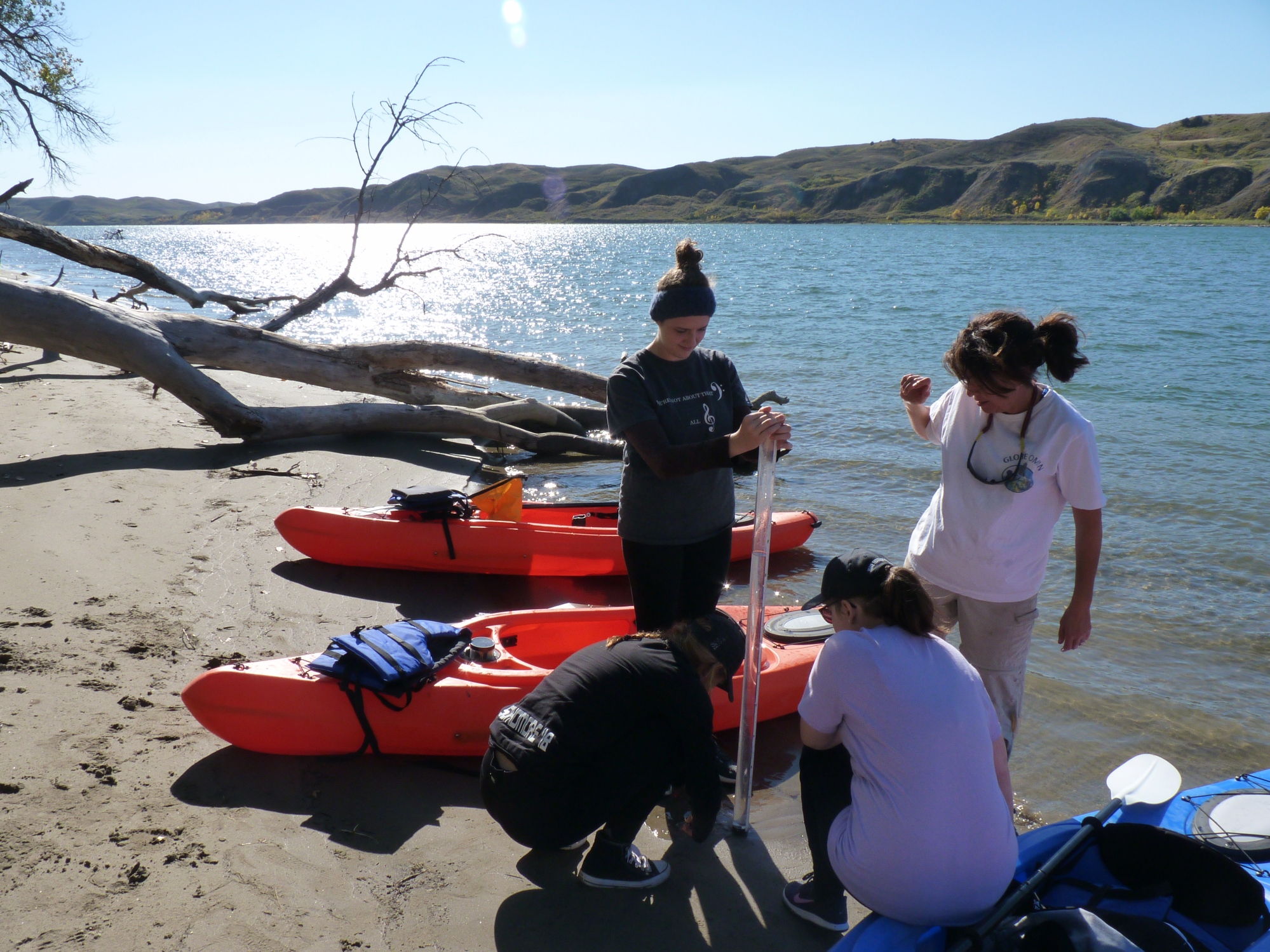How do you get people to care about the invisible?
Watersheds are difficult to see, except for those who are conversant with hydrology or topographic maps. As much a geographic concept as a landform, watersheds are unlike hills or valleys or plains in that watersheds do not have a shape that is familiar to us. For those who don’t know, a watershed is an area of land where all rivers and streams drain into the same body of water.
Occasionally, a roadside sign will inform us that we have traveled from this watershed into that, or we are now at a Continental Divide, but most of the time we move about the face of the Earth unaware that wherever we go on land, we are in a watershed.

Watersheds in South Dakota
At the South Dakota Discovery Center in Pierre, South Dakota, (the historic homelands of the Oceti Sakowin and other Indigenous peoples) we recently started to use citizen science to connect people, directly or indirectly, to their watersheds. Specifically, we use a volunteer water quality monitoring project developed in partnership with the Department of Agriculture and Natural Resources (which is the state agency tasked with water quality protection), GLOBE Land Cover, Debris Tracker and iNaturalist. Each project offers an opportunity for volunteers to contribute meaningfully to the understanding of watershed health. Find those projects on our SciStarter page.
The volunteer monitoring project is, perhaps, the citizen science activity that is most obviously concerned with watersheds. At the heart of every watershed is water; a seeping stream, a languid lake, a roaring river. This water body is the low spot of the surrounding landscape, receiving any rain and melting snow that does not evaporate or infiltrate into the ground. The quality of the water in these rivers, lakes, and streams is often impacted by what flows into the water from the land. Keeping on top of water quality measurements that can literally change in an hour is a challenge. A dispersed volunteer network can collect samples more frequently and in more places than environmental technicians and scientists. More data means better information to help watershed scientists protect the water.
Watershed Health Bolstered by Citizen Science
But not everyone lives near a water body nor can everyone devote the time required to be a volunteer water quality monitor. For these reasons we identified additional citizen science projects for volunteers who want to contribute to watershed health.
Using the GLOBE Land Cover Observer app, volunteers take geo-located photos in the four cardinal directions, of the sky above them and the ground at their feet. This information is of use because it documents visual conditions in the watershed, particularly in riparian areas and along shorelines. This project is useful here in South Dakota in that winter is not a barrier to contribution. Photos taken in winter can provide useful information about snowpack, ice cover and winter hydrology.
A common watershed protection activity is for a local group to organize a trash pick up. This helps keep litter from being washed into the rivers, lakes, and streams and prevents the formation of microplastics from the plastic trash. Debris Tracker, a litter tracking app, takes a trash pickup to the next level by documenting the types of trash found in the watershed. Knowing the kind of trash that is present is the first step in reducing it.
iNaturalist is an unusual project to include in a suite of citizen science projects dedicated to watershed health and protection. And, in fact, iNaturalist data is currently used for survey purposes of what lives in a watershed rather than any assessment of watershed health. The data iNaturalist provides will be useful to compare changes to the flora and fauna over time because when the watershed is modified in a substantial way the flora and fauna will respond to these impacts.
Citizen Science Programming
It was mentioned above that promoting citizen science participation to connect people to watersheds is a recent development for us at the South Dakota Discovery Center. What makes this admittedly ambitious undertaking much easier is that we had two assets we could leverage to propel this work forward.
The first asset was participating in the Citizen Science, Civics and Resilient Communities project funded by NOAA and coordinated through the Museum of Science, Boston. This project, dedicated to engaging community members in citizen science to build more resilient communities, gave us a strong kick off to our citizen science outreach. We connected with like minded institutions around the country, were able to plug interested community members into a high profile event (the community discussion forum) early on so they could see the relevance of their work, and being a partner got us a page on SciStarter which simultaneously built the reach and credibility of the work.
The second asset was to leverage the South Dakota Master Naturalist program which we helped launch in March 2021. Master Naturalists need to earn volunteer hours once they complete training and contributing to citizen science projects is a way to fulfill this obligation. Having a specific audience that we support with training, incentives and creating a sub-community of citizen scientists within the existing community of Master Naturalists makes the “lift” on this outreach for watershed health much easier.
We will, of course, encourage the general public to participate in these citizen science projects. Our goal is not just for people to see their watershed but to feel connected to it as well. Get started on our SciStarter page today!

